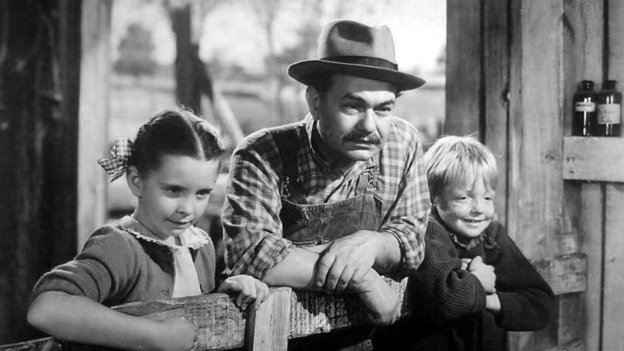
Greetings,readers! All month I’ve been highlighting hidden gems in the career of versatile actor Edward G. Robinson. To close out Edward G. Robinson month,I have chosen The Stranger from 1946. Robinson did a lot of work in the world of film noir. His most famous noir role came in the classic Double Indemnity. He also had leading roles in the Fritz Lang noir gems Scarlet Street and The Woman in the Window. While The Stranger is lesser known,it’s a discovery you should make time for.
The Stranger is about a detective from the War Crimes Commission named Mr. Wilson (Robinson),who travels to Connecticut to track down a Nazi war criminal. The Nazi in question is Franz Kindler,the mastermind of the Holocaust. Kindler has relocated to Connecticut,erased his identity,and is now passing himself off as Professor Charles Rankin. Rankin is played by Orson Welles,who also directed the film. Wilson tracks Kindler to Connecticut by releasing Kindler’s former comrade Meinike (Konstantin Shayne). Meineke leads him to Harper,Connecticut,but is killed before being able to identify Kindler. Wilson’s only clue is Kindler’s fascination with antique clocks. He eventually enlists the help of Noah Longstreet (Richard Long),the brother of Rankin’s new wife Mary (Loretta Young). How this all comes together I’ll leave for you to discover. It’s a treat watching all the plot elements fall into place.
This film is another great performance in the career of Edward G. Robinson. He could just as easily play a gangster as he could the conscious of a film (examples include The Stranger and Double Indemnity). He also has great co-stars in this film,including Loretta Young and Orson Welles. Welles is best known for Citizen Kane,but I prefer his work in the noir genre. The Lady From Shanghai and Touch of Evil are great as well. But this one is my favorite. Without giving too much away,there’s a great scene on a clock tower. It’s one of my favorite scenes in all of film noir. Welles really makes you feel his paranoia as Robinson closes in on him. Loretta Young is wonderful as Welles’ vulnerable wife Mary. And Robinson is solid as always. It’s a film that doesn’t get mentioned enough in discussions about his career.
Edward G. Robinson is an actor who I still don’t think gets enough credit for his body of work and versatility. Most people think of him only as a gangster,which he did so convincingly in Little Caesar and many others. Before all was said and done he had 113 film and television credits. Not too shabby! I hope my blog entries this month will inspire you to check out some of his lesser-known films and appreciate his talents.
That’s it for Edward G. Robinson month! Join me in the New Year when I kick things off with a month-long spotlight on director Michael Curtiz.





